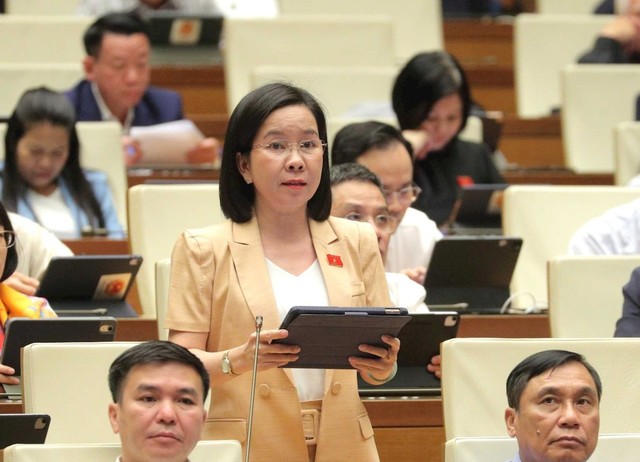According to National Assembly Secretary-General Le Quang Manh, Vietnam aims to pilot a carbon credit exchange by the end of 2026. This initiative represents an important step toward creating a domestic carbon market. The new timeline is about a year later than the initial target of completing this initiative by the end of 2025.

Secretary General of the National Assembly Le Quang Manh speaks at the morning session on October 28. Photo: National Assembly Media
A supervisory report on the implementation of the Law on Environmental Protection 2020 has highlighted the development of a carbon market as one of six key tasks and solutions to be accomplished by 2026. This initiative is aimed at advancing environmental protection policies. The carbon market serves as a platform where enterprises and organizations can buy and sell greenhouse gas (GHG) emission rights through carbon credits or allowances. Companies facing emission shortages can purchase additional credits to offset their excess, while those with surplus credits — or that generate credits through emission reduction activities — can sell them to others.
Despite its significant potential, Vietnam faces several challenges in developing this market. Ms. Ha Hong Hanh, Deputy Head of the Propaganda and Mass Mobilization Committee of Khanh Hoa Province, noted that currently, only two to three domestic centers meet international standards for greenhouse gas (GHG) inventory assessments. Additionally, emission data is fragmented, making quota allocation and monitoring more difficult. Furthermore, Vietnamese companies looking to sell carbon credits often depend on foreign intermediaries, which increases transaction costs and diminishes the net benefits.

Ms. Ha Hong Hanh - Deputy Head of the Propaganda and Mass Mobilization Department of Khanh Hoa province spoke at the discussion session on the morning of October 28. Photo: National Assembly Media
Ms. Hanh highlighted the importance of enhancing the legal framework for carbon exchanges, which includes regulations related to allocation, trading, and market operations. She also advocated for the establishment of a national greenhouse gas (GHG) emission database that would be standardized from the central government down to individual enterprises. In addition, Ms. Hanh suggested that the government should provide support for auditing and registration costs for small and medium-sized enterprises (SMEs) and offer tax incentives or green credit options to those leading the way in efforts to reduce emissions.
In parallel with the carbon market, Vietnam is preparing to issue its National Action Plan on Pollution Control and Air Quality Management for 2025–2030, with a vision toward 2045. Immediate measures will be rolled out in Hanoi and Ho Chi Minh City to address fine dust pollution. The government also plans to build an online GHG inventory information and data system, enabling real-time monitoring, analysis, and reporting. By the end of 2026, the National Environmental Database is expected to become operational, fully integrated with other national data systems and accessible in real time.
According to the supervisory mission, Vietnam’s environmental protection efforts have achieved notable progress, with three out of five environmental targets for 2025 already exceeded, including:
Major sources of emissions have been effectively managed, and there have been no significant environmental incidents. However, urban air pollution, particularly from fine particulate matter, continues to be a serious issue, with Hanoi and Ho Chi Minh City frequently ranked among the most polluted cities in the world. Furthermore, the environmental infrastructure remains outdated; only 18% of urban wastewater is treated, while just 31.5% of industrial clusters and 16.6% of craft villages have centralized wastewater treatment systems that meet regulatory standards.
The pilot operation of the carbon trading floor by the end of 2026 marks an important step forward in realizing Vietnam's emission reduction commitment. However, for the market to operate effectively and transparently, it is necessary to complete the legal framework, standardize emission data, and enhance the capacity of participants. The carbon market is not only an economic tool for greenhouse gas management, but also a platform to promote businesses to innovate their growth models towards a greener and more sustainable future.
Thuy Linh